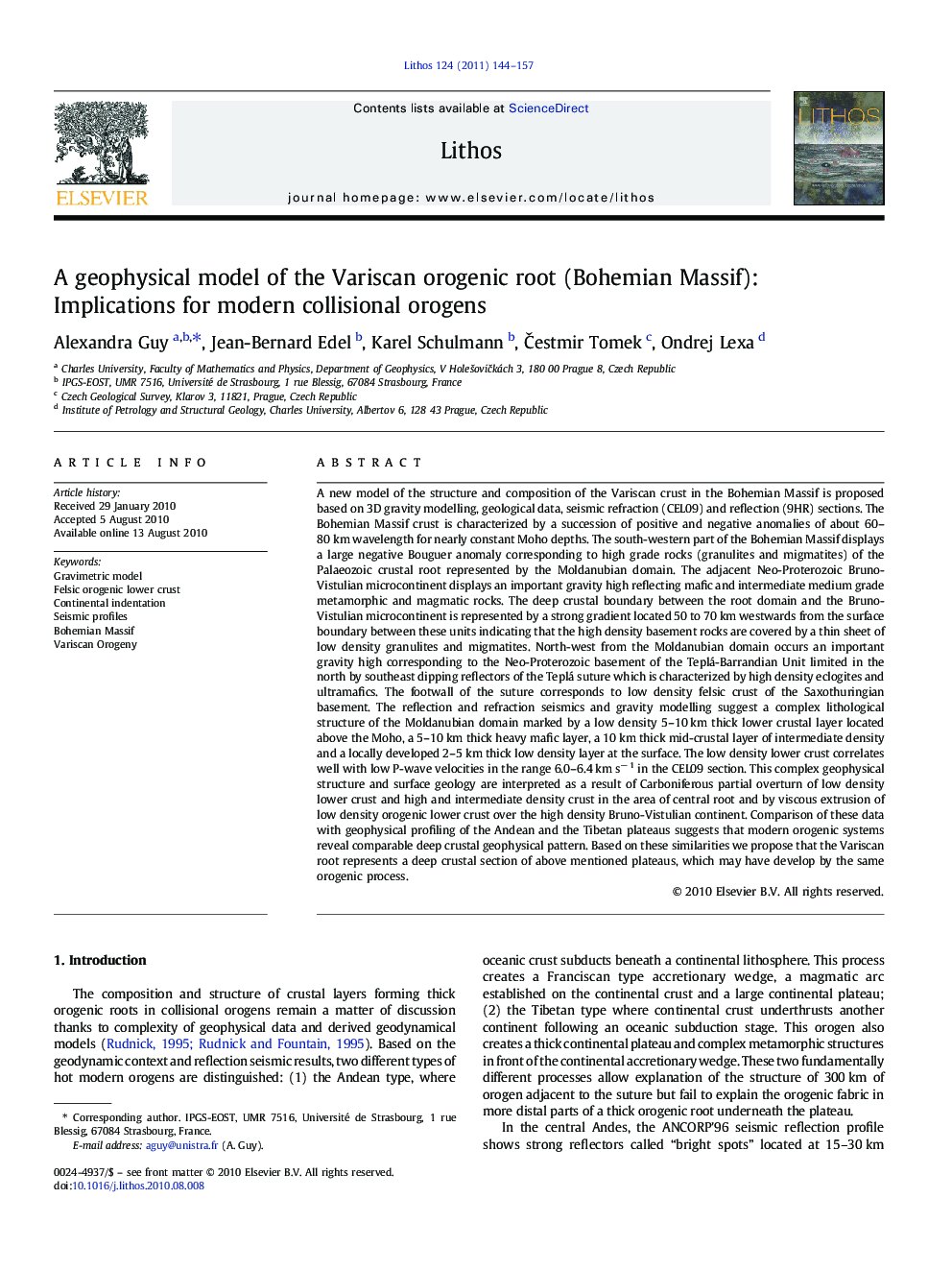| کد مقاله | کد نشریه | سال انتشار | مقاله انگلیسی | نسخه تمام متن |
|---|---|---|---|---|
| 6441251 | 1638721 | 2011 | 14 صفحه PDF | دانلود رایگان |

A new model of the structure and composition of the Variscan crust in the Bohemian Massif is proposed based on 3D gravity modelling, geological data, seismic refraction (CEL09) and reflection (9HR) sections. The Bohemian Massif crust is characterized by a succession of positive and negative anomalies of about 60-80 km wavelength for nearly constant Moho depths. The south-western part of the Bohemian Massif displays a large negative Bouguer anomaly corresponding to high grade rocks (granulites and migmatites) of the Palaeozoic crustal root represented by the Moldanubian domain. The adjacent Neo-Proterozoic Bruno-Vistulian microcontinent displays an important gravity high reflecting mafic and intermediate medium grade metamorphic and magmatic rocks. The deep crustal boundary between the root domain and the Bruno-Vistulian microcontinent is represented by a strong gradient located 50 to 70 km westwards from the surface boundary between these units indicating that the high density basement rocks are covered by a thin sheet of low density granulites and migmatites. North-west from the Moldanubian domain occurs an important gravity high corresponding to the Neo-Proterozoic basement of the Teplá-Barrandian Unit limited in the north by southeast dipping reflectors of the Teplá suture which is characterized by high density eclogites and ultramafics. The footwall of the suture corresponds to low density felsic crust of the Saxothuringian basement. The reflection and refraction seismics and gravity modelling suggest a complex lithological structure of the Moldanubian domain marked by a low density 5-10 km thick lower crustal layer located above the Moho, a 5-10 km thick heavy mafic layer, a 10 km thick mid-crustal layer of intermediate density and a locally developed 2-5 km thick low density layer at the surface. The low density lower crust correlates well with low P-wave velocities in the range 6.0-6.4 km sâ 1 in the CEL09 section. This complex geophysical structure and surface geology are interpreted as a result of Carboniferous partial overturn of low density lower crust and high and intermediate density crust in the area of central root and by viscous extrusion of low density orogenic lower crust over the high density Bruno-Vistulian continent. Comparison of these data with geophysical profiling of the Andean and the Tibetan plateaus suggests that modern orogenic systems reveal comparable deep crustal geophysical pattern. Based on these similarities we propose that the Variscan root represents a deep crustal section of above mentioned plateaus, which may have develop by the same orogenic process.
Research Highlights⺠Felsic lower crust underneath a thick mafic layer in the Moldanubian domain. ⺠Felsic granulites derive from lower crustal felsic layer thanks to gravity overturn. ⺠Continental indentation in the root system of the Bruno-Vistulian microcontinent.
Journal: Lithos - Volume 124, Issues 1â2, May 2011, Pages 144-157